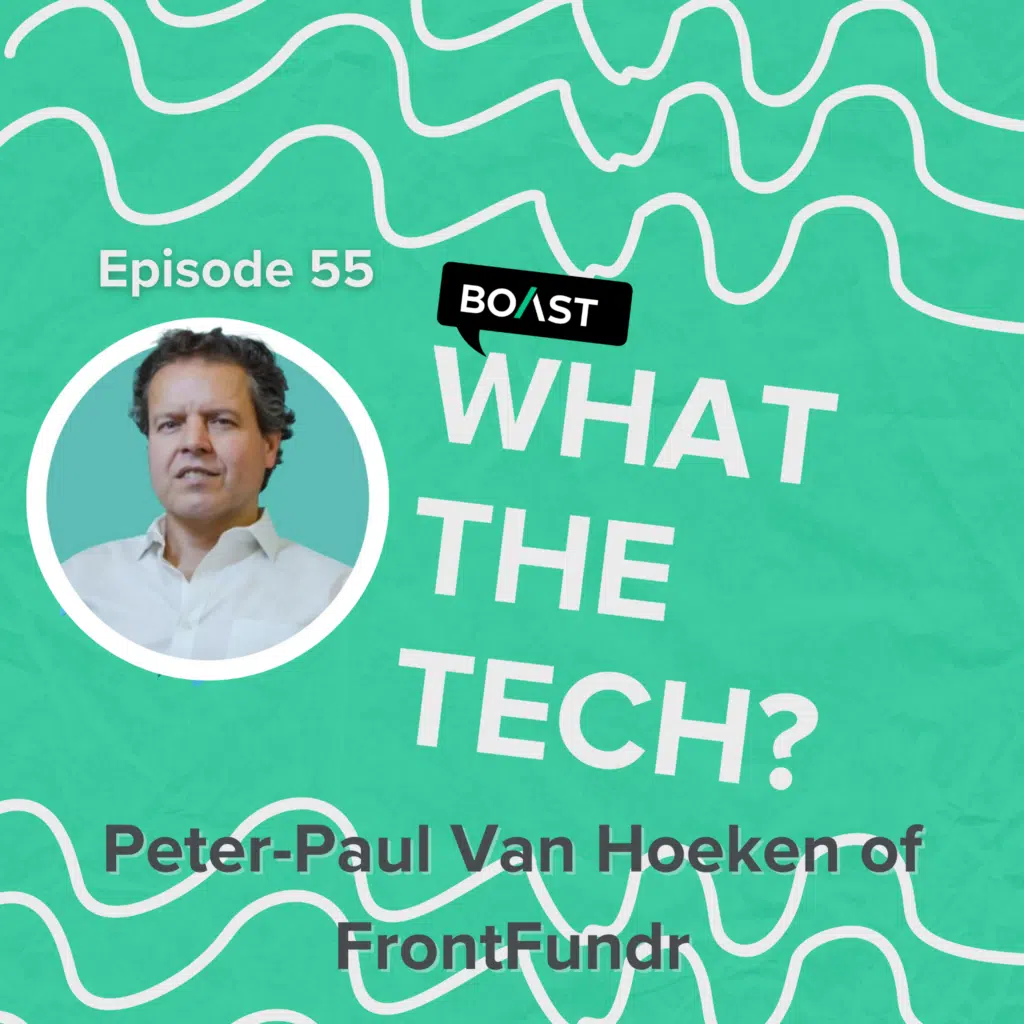Businesses led by female founders have been changing the world for generations: From Estee Lauder, who revolutionized cosmetics a century ago, to Kiran Mazumdar-Shaw, who started Biocon in her garage and grew it to become the highest-revenue biopharma in all of India.
Female-led businesses have also proven to be incredible investments, with research conducted by First Round Capital finding that startups with at least one female founder outperform all-male founding teams by 63 percent.
At the same time, however, researchers at Columbia Business School and the London Business School found that businesses led by women are 63 percent less likely to obtain venture capital (VC) funding than those led by men.
While there are many ways to slice and dice these figures, the prevailing story across all this data is that at every stage of the startup lifecycle, female entrepreneurs are often not getting the support they need to pursue their innovative ideas. Even with their success rate in driving returns compared to their male counterparts, women represented just 14 percent of solo startup founders as of 2021, and only 1.9 percent of total VC funding.
Bringing female founders together
Solving the persistent problem of giving women equitable access to capital—and to ultimately bring their innovative ideas to market—is no small task. But at Boast, we know first hand what it takes to help founders with great ideas map out capital strategies that fuel their innovation and eventual production.
To discuss the challenges and strategies to overcome them, Boast’s own Aliya Amershi and Jessica Doody collaborated on a recent #InnovatorsLive panel, bringing their expertise as founders and R&D pros to a conversation about building businesses without relying on VCs.
Along with being a Technical Solutions Manager at Boast, Aliya is an Engineer turned Entrepreneur and Tech Startup Coach at Codefree App Launch, a startup suite of products and packages to help self-funded founders launch their app idea and grow their business using no-code and AI solutions.
Jessica, who is Product Owner at Boast and startup coach with Platform Calgary, originally has a non-technical background, but found her way into tech as a multiple-time founder in her own right, having witnessed firsthand how SaaS solutions were changing the way small businesses were built and operated.
In their discussion, Aliya and Jessica focus on ways that founders can delay the need for early investment, hack their way to traction, and increase their chances of getting funding when the time is right.
“The reason why a lot of women think they need investors is simply because they’ve been told ‘that’s the way to do it.’ But in this economy, there just isn’t a lot of startup investment, period, and you really do have to think outside the box to get funding,” Aliya explains. Plus, the longer you can delay getting funding, the bigger piece of the pie you can retain in the end.
To help female founders get there, Aliya recommends the Triple Threat Approach, which focuses on Business, Technology and Mindset.
Business: The technology isn’t necessarily your solution
“When I’ve typically connected with founders, they often conflate their technology with their solution, when those are two completely separate things in the context of a startup,” Aliya says. In practice, the technology is really just a medium to deliver, enhance and scale the solution that founders are ultimately aiming to deliver.
Given this grounding, the solution (or product) is really defined as how you solve a painful problem. A good place to start in delineating the solution from the technology is for founders to first think of their value proposition, ie.
- Who are your ideal target customers?
- What is their painful problem you are trying to solve?
- With this knowledge, what is your unique solution?
- What are the key customer benefits of your solution?
- What’s different about this solution from what’s already out on the market?
But understanding any of this hinges on actually talking to your customers. As Aliya points out, “you don’t have to literally pick up the phone and cold call—though you certainly can!”
Social media, for instance, is perhaps the fastest way to access potential customers, form relationships and insights around what their important and urgent needs are and their biggest challenges in acquiring them, and cultivate these pivotal relationships without ever even pitching or selling your idea or product.
“You don’t want to ask someone to marry you on your first date,” Aliya adds. “You tell them about your mission, work to understand their pain points—and that’s really how you kick off a mutually beneficial customer relationship.”
Jessica echoes this sentiment, as she’s discovered each week when talking to founders as a startup coach that “customer discovery upfront is key before anything else.” You should be talking to customers and potential customers from day one.
“This ensures that you know what value your solution needs to deliver, and that you’re working on the right solution before you actually invest in a full build,” Jessica adds.
Technology: Don’t expect a perfect product upon your first launch
Often, Aliya and Jessica discover that founders think they need to build a fancy product, complete with the latest buzzwords (AI, blockchain, etc.) and that it has to be perfect upon launch.
That’s simply not true, Aliya emphasizes, adding that startups need to create a minimum viable product (MVP)—which comes from the LEAN methodology—before embarking on a full-fledged “finished” product, because there is no such thing.
“The whole point is to get the maximum amount of validated learning about your customers with the least amount of effort. The amazing thing now, with the proliferation of no-code and AI, is that it’s easier than ever to get the first version of your product—your MVP—out to market at speed,” Aliya says.
Solutions like Bubble or Glide are out there, for instance, while something as simple as Zapier paired Google Sheets can even be helpful in building a directory. It’s often a matter of integrating tools to hack together a “Frankenstein” product at the start, which more often than not suffices at the early stage—as long as these solutions are delivering results and solving real problems.
Once founders start generating revenue from this “Frankenstein” product, that’s when they can begin to self-fund the business using revenue from customers, opposed to just investors. This not only delays the need for outside funds, but helps founders validate their idea. Having customers willing to pay for your product or service is the ultimate validation that you are on to something valuable and getting closer to nirvana known as product-market fit.
It’s at this stage that founders can hire or invest in building their innovative R&D product based on what they have learned through their MVP version available to customers. This is exactly when it makes sense for founders to reach out to Boast and work with our SRED experts to reimburse some of these R&D costs.
“Once you can demonstrate traction and showcase your R&D innovation, that’s when investors will start chasing you instead of you having to chase them,” as Aliya says.
MVP in action: Birdie Break
As Jessica explains, she’s seen this strategy in action. Birdie Break, a babysitting marketplace, was built using this very approach, with the founders essentially hacking together a marketplace solution using an array of tools to solve their target customer’s biggest pain points.
When the marketplace came online, Birdie Break’s customers had no idea the platform wasn’t fully automated because it did the job seamlessly , and the founders were able to get enough active users to start building revenue. With that income, the founders could then outsource the development of the product to a more technical team. By the time the team went looking for investment, they had already established a growing MRR—something investors love to see.
Hacking together that first MVP solution to make sure you’re delivering true value to the customer—and getting it right before investing in a more technical version—can ensure your team’s runway without ever selling your customers short.
Mindset: Connecting with a coach and a community
For the third pillar of Aliya’s Triple Threat approach, she and Jessica discuss two facets of mindset that often pose “mental blockers” for founders regardless of gender: Our own thoughts, and a lack of community.
Whether it’s the fear of rejection, imposter syndrome, or perfection paralysis, it’s often a founder’s own thinking that can drive innovation to a halt. Aliya emphasizes investing in a coach who can help founders learn how to accept failing fast and learning from their mistakes, while also advocating for daily practices that can help put founders in a “state of flow,” including meditation and other mindfulness techniques. The key is to focus on progress over perfection when it comes to overcoming your fears and limiting beliefs.
As well as battling internal blockers, there’s also the impact that community can have on a founder’s mindset—especially for women, who simply may never have been exposed to many other female peers as they came up in the business world. Jessica is a huge community advocate, and is involved in several groups in Alberta and across Canada that can give women access to programs that are low-cost and free.
What Jessica finds to be one of the most valuable facets of these communities is that they offer female founders opportunities to socialize their ideas, which builds confidence.
“This is critical,” Jessica explains, “as it makes you good at talking about your story, telling it to strangers, and building your brand narrative. The better you are at telling your story and positioning your product, the more successful you’ll be, as your story trickles into every area of your business.”
Join the Boast Community
At Boast, we’re excited to help more women-led businesses bring their innovations to market, and tap into non-dilutive R&D funding to extend their runway. But we’re more than just experts at SRED and tax credits; we’re a community of founders in our own right, with groundbreaking innovators playing a role across the organization.
To see this community in action, tune into our #InnovatorsLive panel every Friday at 12pmET/9amPT to learn invaluable strategies for founders of all backgrounds, from how to create a capital strategy, to actually staffing (and retaining) key technological talent.




